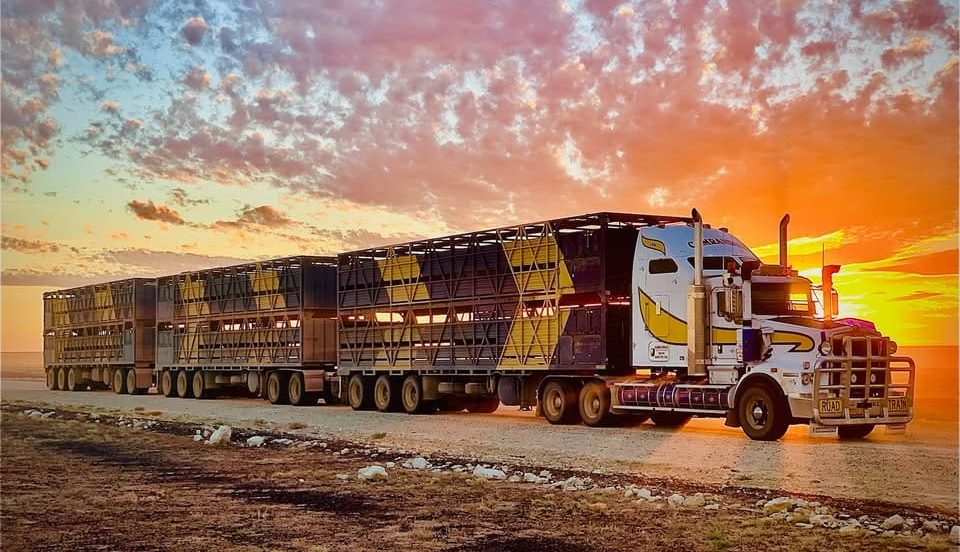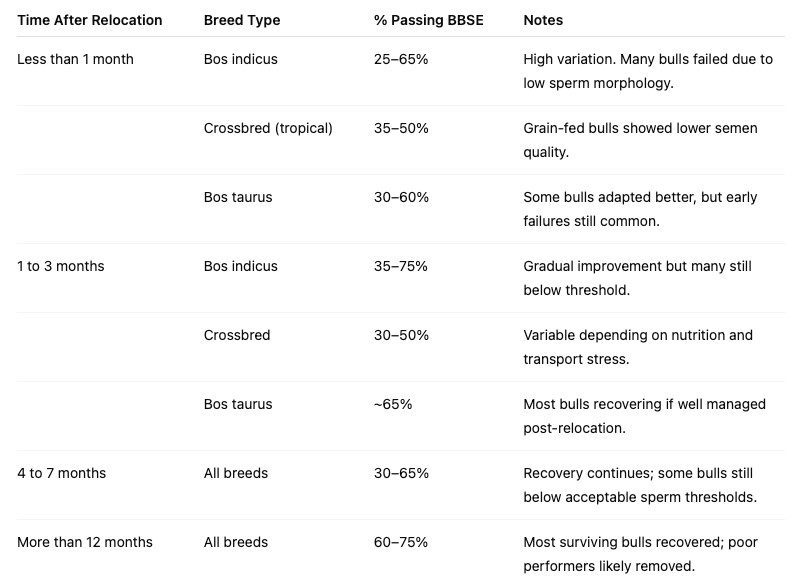
Road train operated by Camrandale Transport, Quilpie QLD
A OTABLE trend in the 2025 Spring bull sale season has been the strong buyer demand from Queensland commercial beef producers.
There have been large volumes of bulls secured at recent sales in NSW by Queensland-based producers, with many travelling more than four or five hours to attend sales.
In addition to the many producers who have travelled south for sales, there has been a strong online presence as well. Some recent NSW bull sales have seen online bidding account for 12-15pc of bids, and 8-10pc of bull purchases.
As a result of this strong demand, many bulls will now be heading considerable distances to new breeding programs. Post-sale, most beef producers focus on the logistics associated with transporting their new herd bull, or bulls, home.
Quite rightly, the focus is often on the risks associated with the journey, with insurance for transport strongly recommended by the vendors and agents, as well as by most industry advisors.
Introducing new bulls has also been the focus of clear recommendations. These recommendations have been published by industry organisations including MLA, NSW Local Land Services and breed societies such as Angus Australia.
Broadly speaking the four areas where much focus has been placed include:
- The need to acclimate bulls calmly using yarding with companion cattle for 1–2
- Implementing routine health protocols immediately post-arrival (vaccines, drenches, lice control).
- Managing young bulls separately or with same-age peers – not with older dominant bulls.
- Reducing transport and mixing stress to preserve fertility and onset of productive service.
Least understood point
While all these points are important in ensuring bull health and readiness to commence joining, possibly the final point regarding transport stress is the one that may be the least understood by owners of new bulls.
As noted previously this year, as indeed will be the case later with the focus on northern sales, many bulls will be transported long distances. In some cases, the distance associated with the sale is not only post-sale but may include significant travel to be presented at a sale, particularly for some of the larger multi-vendor sales held in the North.
The effects of travel has been shown to have some significant impacts on bull fertility and subsequent ability to successfully start work within a breeding herd.
Bull Power project
The Bull Power program conducted in Northern Australia by Dick Holroyd some years ago identified the risks associated with fertility among bulls travelling pre and post-sale. The cumulative impact of travel, which can be considered as ‘the relocation burden’, encompasses the physical, metabolic, and reproductive stresses bulls experience from a combination of pre-sale transport, sale yarding, handling, and post-sale relocation.
Bulls offered at multi-vendor or regional sales may have already been transported hundreds of kilometres before entering sale facilities, where they are exposed to new social groupings, altered diets, variable handling, and climatic change. The impact is much the same as store or slaughter cattle passing through saleyards, as measured by MSA grading impact.
Following purchase, those bulls are mostly transported again, sometimes over longer distances, to unfamiliar environments with different nutritional and management conditions.
The Bull Power project found that this compounded stress load can significantly impair semen quality and suppress mating behaviour, even in structurally sound bulls.
The Bull Power project found the impact of this relocation burden often resulted in a temporary reduction in bull fertility (Relocation Depressed Fertility – RDF). The key characteristics of RDF included reduced sperm morphology, motility, or overall semen quality following relocation.
The issue would often occur within three months post-relocation, but in some bulls can persist for longer. One of the other key issues was that RDF was found to affect up to 50pc of bulls, even if they had passed pre-sale Bull Breeding Soundness Evaluations.
This final point is a concern for many new bull owners, who often think that if their new bulls have passed their BBSE, after a short acclimatisation these bulls would be fit to work.
The reality in the data published in Bull Power shows that acclimatisation levels and recovery from RDF can vary significantly depending on age and breed type.
Bull Fertility after relocation – BBSE Pass Rates

Data sourced from the Bull Power Project Final Report (NAP3.117, Meat & Livestock Australia, 2005). BBSE pass rate reflects bulls with ≥50pc morphologically normal sperm and acceptable physical traits. Results varied with breed, age, feeding history, and relocation conditions. Click on image for a larger view
Older bulls travel relatively better
Within the project, age was a significant factor influencing bull fertility outcomes following relocation.
While breed and environmental stressors played a role, younger bulls (especially under 2.5 years of age) were consistently found to be more susceptible to relocation-induced depressed fertility (RDF).
Younger bulls showed lower BBSE pass rates post-relocation than mature bulls, particularly in the first three months after transport. This was especially true for Bos indicus and tropical crossbred types, which were overrepresented in lower pass rate categories.
The report concluded that younger bulls took longer to recover and begin successful service activity. Some had not reached full reproductive maturity, and their semen quality proved more variable under stress.
In contrast, older bulls (3+ years) that had already established mating experience were generally more resilient, with faster recovery and more consistent BBSE outcomes, provided they were in good condition and had been managed appropriately pre-sale.
While the Bull Power project was focussed on northern Australia, RDF can impact bulls being transported even on shorter distances.
It can be easy to focus only on transport and time in transport as the issue. However Bull Power found the causes of RDF were multi-factorial, with other factors such as social regrouping & dominance pressure; climate adaptation; nutritional shift (grain or supplementary feeding to pasture) and novel pathogens and immune challenge all contributing to fertility loss.
The results of Bull Power highlight that bulls need structured support following relocation, including rest, observation, and in some cases, deferred joining.
This is particularly important for younger bulls, whose reproductive systems are more vulnerable to disruption, and for any bulls subjected to multiple stressors in a short time frame.
Ultimately, investing in careful planning around transport, arrival management, and post-relocation adaptation is essential to safeguard the fertility potential of new bulls.
While the cost and logistics of these steps can be overlooked in the rush to integrate new sires into breeding programs, the reproductive and financial risks of RDF make them a critical part of bull procurement decisions.

Alastair Rayner
Alastair Rayner is Principal of RaynerAg and an Extension & Engagement Consultant with the Agricultural Business Research Institute (ABRI). He has more than 28 years’ experience advising beef producers and graziers across Australia. Alastair can be contacted here or through his website: www.raynerag.com.au